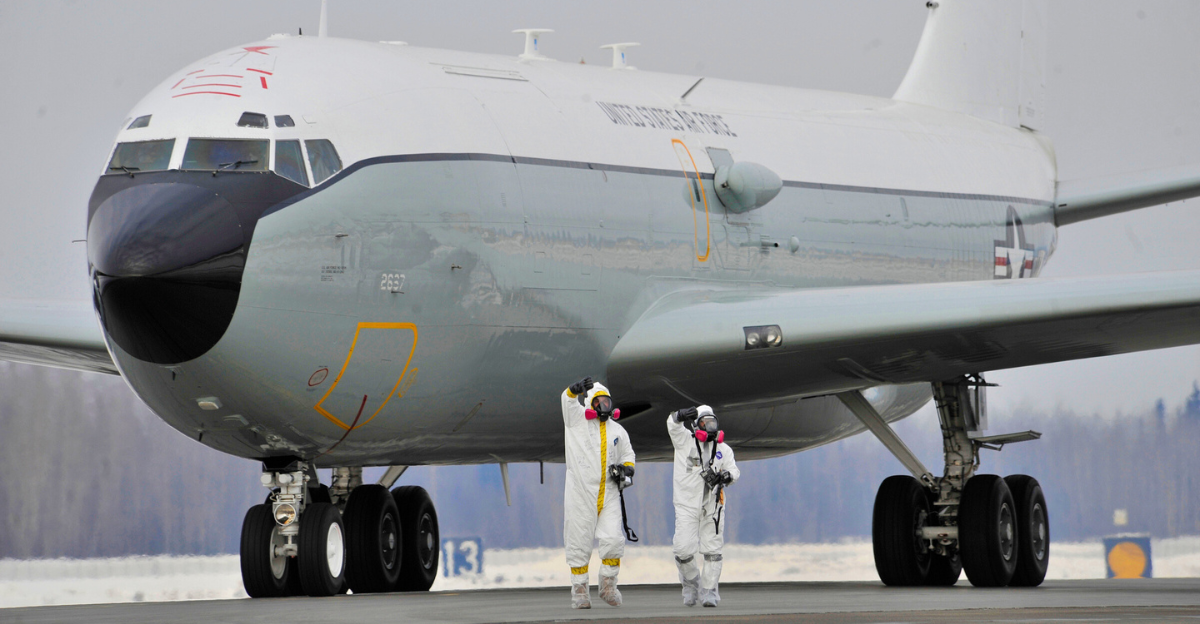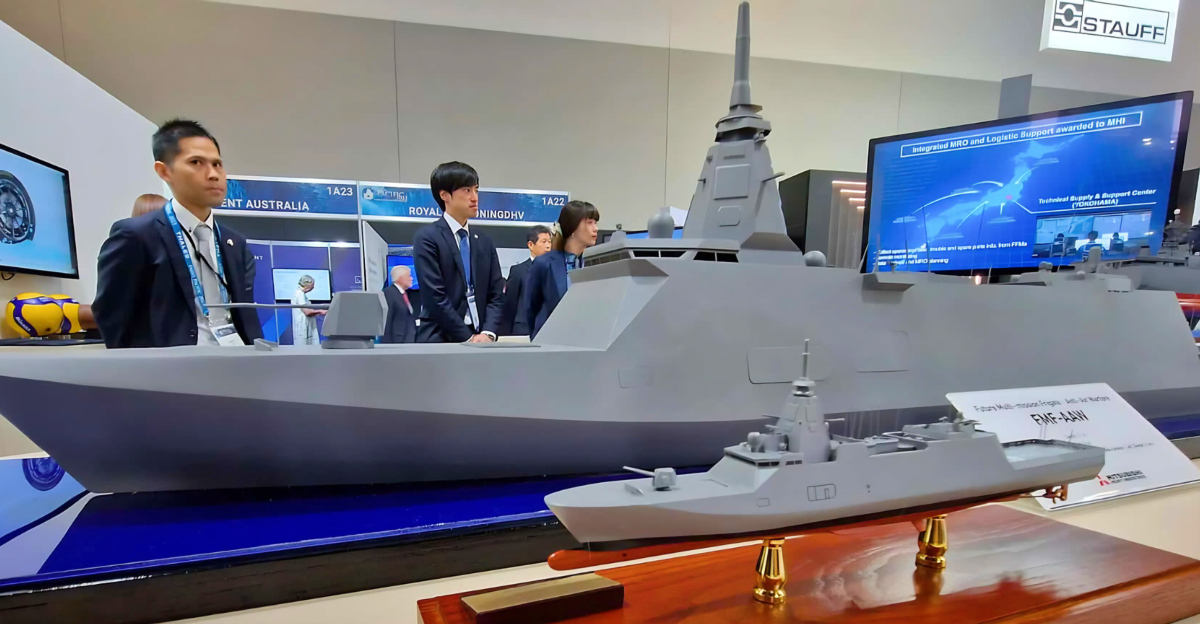
Everywhere you look, it seems like the world is busy preparing for war as militaries become more active and constantly breakthrough new technology and techniques. The Chinese People’s Liberation Army Air Force is no different, as it carried out its first public aerial refuelling of nuclear-capable bombers.
For the first time, footage shows China’s cutting-edge Y-20U aerial tanker topping off H-6N strategic bombers mid-flight. This maneuver dramatically increases the operational range and persistence of these formidable aircraft. What does this remarkable move mean for future conflicts?
The H-6N Nuclear-Capable Bomber
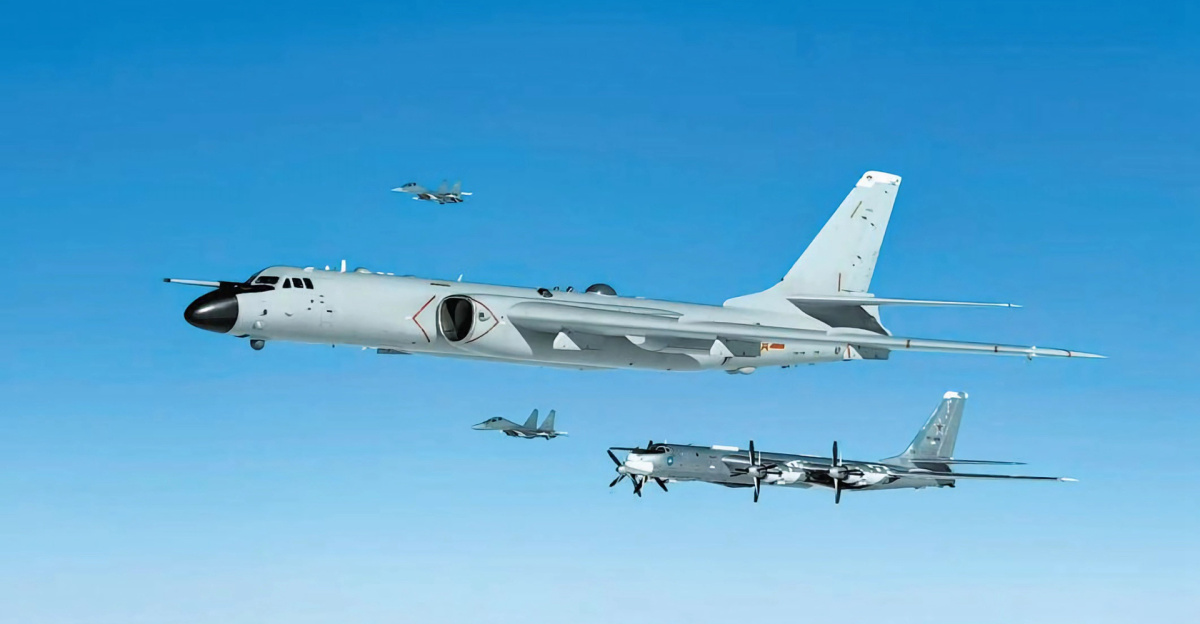
Designed as the first Chinese bomber capable of launching air-launched ballistic missiles (ALBMs), the H-6N features a heavily modified fuselage with a recessed weapons bay and a semi-conformal mount to carry outsized munitions like the CH-AS-X-13 ALBM or potentially the WZ-8 hypersonic drone. Powered by twin D-30KP-2 turbofan engines, the bomber boasts a top speed around Mach 0.75, a combat radius exceeding 2,175 miles, and a maximum payload capacity surpassing 44,093 pounds.
“When combined, the CH-AS-X-13 and H-6N form a highly flexible and survivable strike system that poses a formidable challenge to regional air and naval forces. The bomber’s extended reach and survivability, when paired with the speed, range, and accuracy of the ALBM, allow the PLAAF to conduct preemptive or retaliatory strikes against hardened, time-sensitive, or mobile targets deep within enemy territory or at sea,” according to Army Recognition.
The Y-20U Aerial Tanker

Designed as a dedicated refuelling variant of the Y-20 strategic airlifter, the Y-20U is equipped to carry up to 90 tons of fuel, over four times the capacity of older H-6U tankers and on par with Western heavy tankers like the KC-135. Powered by modern WS-20 turbofan engines, the Y-20U features three refuelling points and a highly efficient fuel transfer capability.
“A large aerial refueling plane is as important as a stealth strategic bomber to the PLA Air Force because it will greatly extend the flight radius of its fighter jets, bombers, and support aircraft like early-warning and electronic warfare planes,” said Wang Yanan, editor-in-chief of Aerospace Knowledge magazine.
Historic Milestone in Chinese Aviation
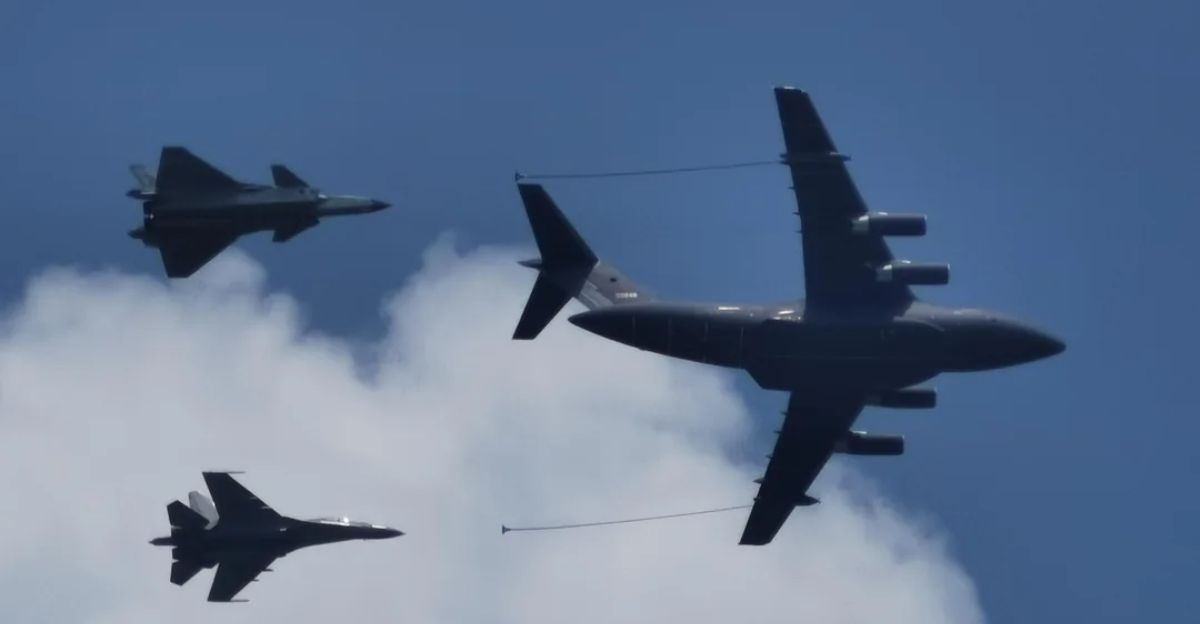
The successful public aerial refuelling of China’s nuclear-capable H-6N bombers using the state-of-the-art Y-20U tanker marks a great milestone in the history of Chinese aviation. The capability fundamentally reshapes China’s power projection posture, empowering its forces to undertake extended missions far from home bases, operate deep into the Pacific, and conduct joint air-naval operations with unprecedented autonomy.
“This was the first demonstration of its kind, pushing the People’s Liberation Army Air Force (PLAAF) into a global spotlight,” experts claimed. With this new capability, just how much further can China reach?
Details of the June 2025 Exercise
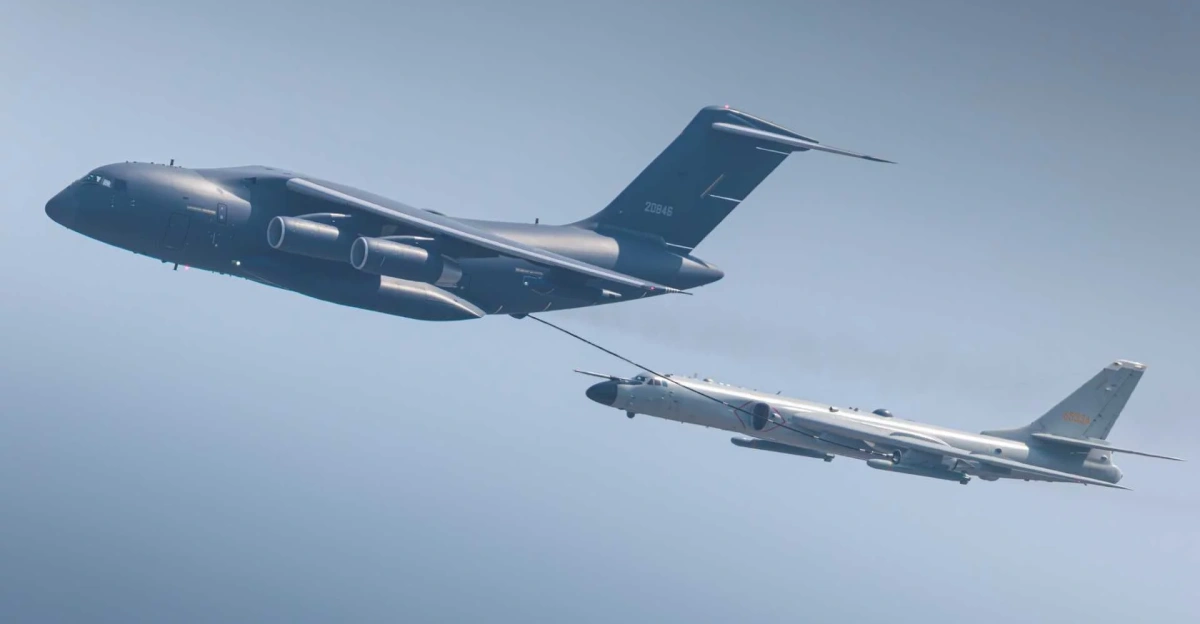
On June 23, 2025, the Chinese People’s Liberation Army Air Force executed a historic aerial refuelling exercise that showcased a Y-20U aerial tanker successfully refuelling two H-6N nuclear-capable bombers in midair, tail numbers 55331 and 55334, using the probe-and-drogue system.
The demonstration was conducted under simulated operational conditions, immediately preceding a major military parade and amid extensive Chinese naval drills in the Pacific, including carrier strike group maneuvers beyond the Second Island Chain.
Extending China’s Strategic Reach
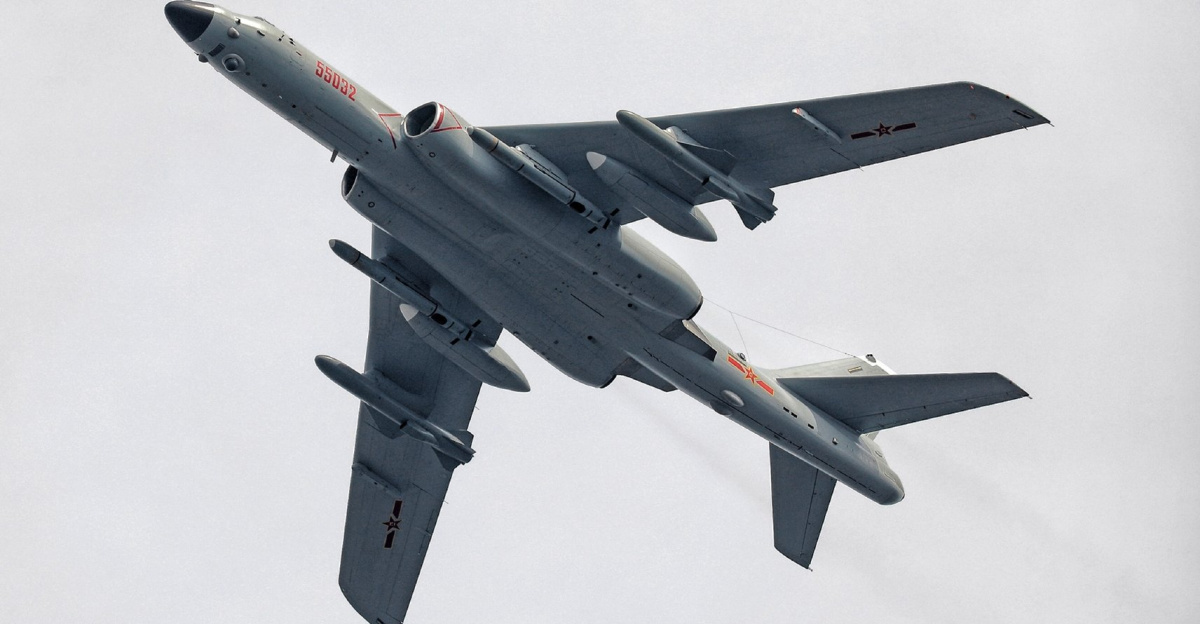
These new tankers enable H-6N nuclear-capable bombers to refuel midair, allowing PLAAF strike missions to extend far beyond China’s traditional regional limits. They reach operational areas deep into the Western Pacific, including bases as distant as Guam and Hawaii. The ability to conduct routine, long-range bomber patrols enhances China’s anti-access/area-denial (A2/AD) strategy, giving Beijing additional flexibility to counter U.S. and allied influence across an ever-wider theater.
China’s airpower can now threaten targets 7,457 miles away, roughly tripling the effective reach of its strategic bombers. “This is important because if you want to have a strategic strike capability, you have to have strategic range associated with that, and [the H-6N] is designed specifically to deliver a nuclear payload,” said security correspondent Bill Gertz.
Nuclear Triad Maturation
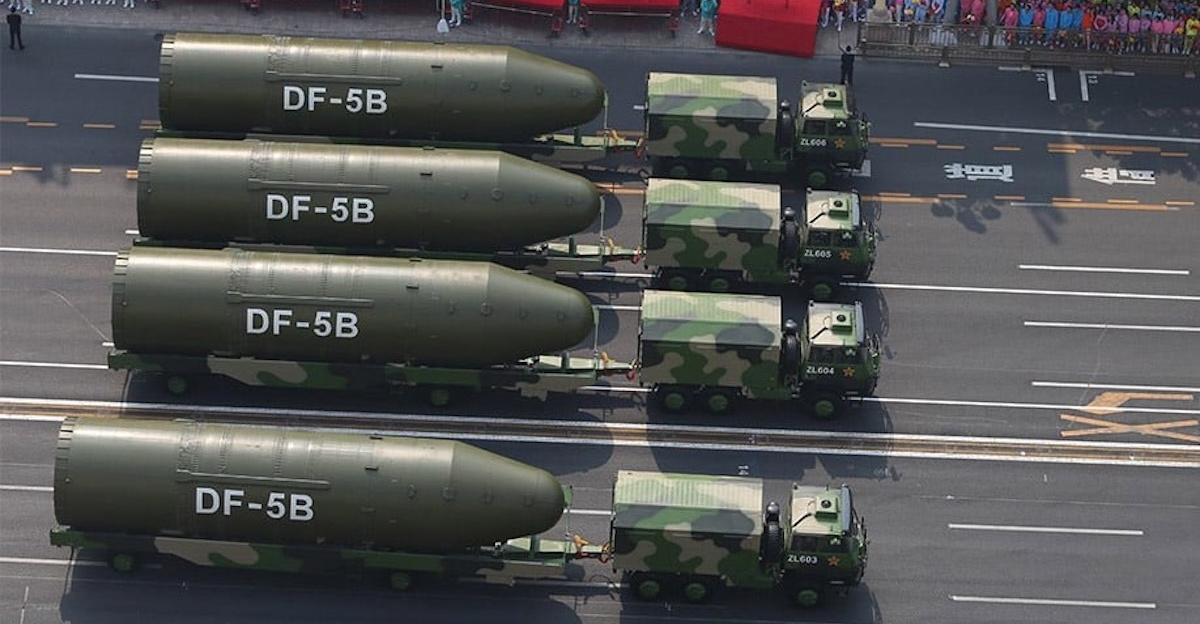
China is actively transforming its nuclear posture by developing a more robust and technologically advanced nuclear triad. This is the combination of land-based intercontinental ballistic missiles (ICBMs), submarine-launched ballistic missiles (SLBMs), and air-delivered nuclear weapons.
While they might not be on the same level as America and Russia yet, they are clearly investing and on their way there. “The H-6 November gives them the long lacking third leg of the nuclear triad,” one intelligence official said. “They are coming online.”
International Response
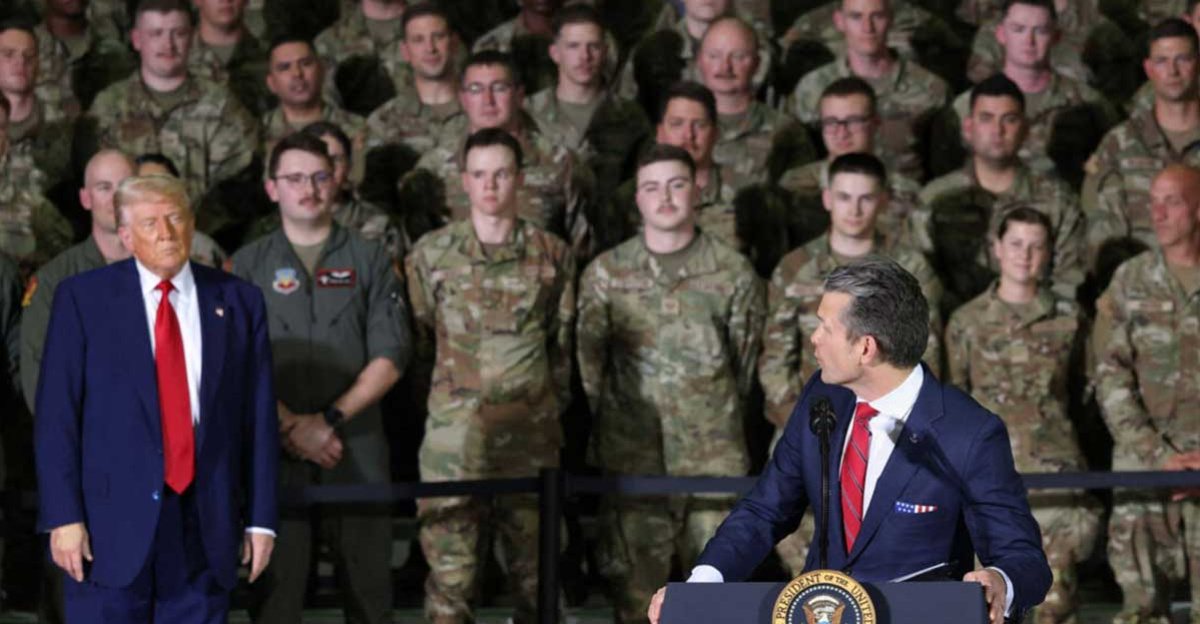
The exercise has heightened anxieties among the United States and its regional allies, who view this as a direct expansion of China’s long-range strike capabilities. The move also drew cautious attention in capitals like Tokyo, Canberra, and New Delhi, where policymakers see China’s advancing refuelling infrastructure as a shift that could alter the regional balance of power and compress warning times for potential contingencies.
Strategic and Regional Implications
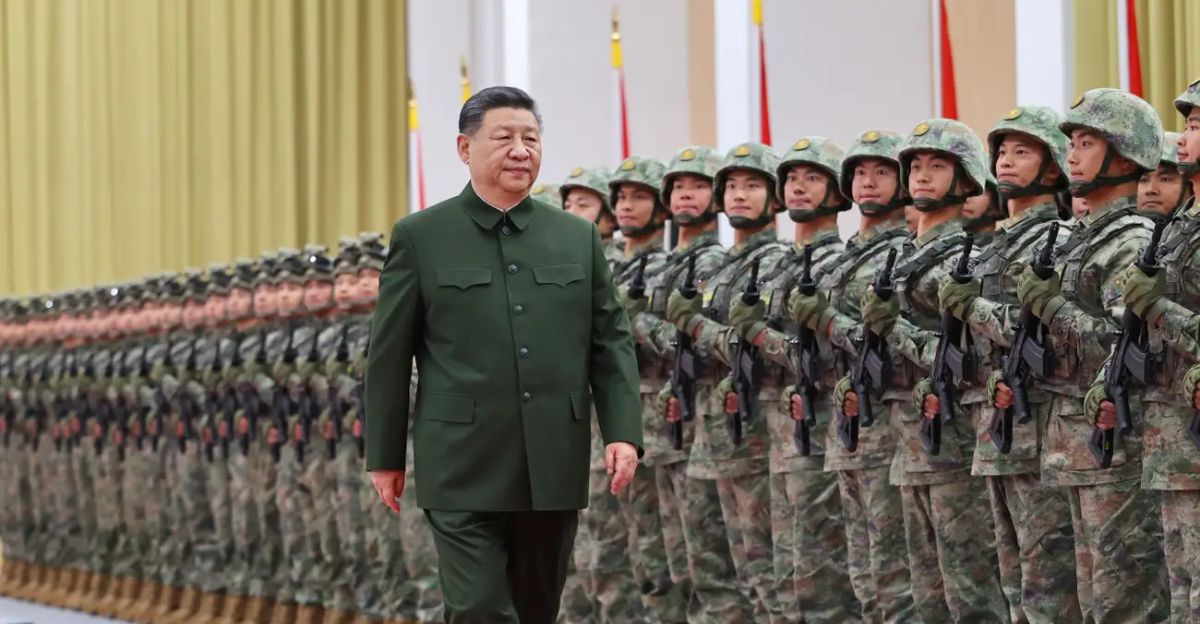
These new capabilities by China completely change the strategies and defense systems that other countries currently have in place, and they will have to adapt accordingly. Strategically, it enhances Beijing’s anti-access/area-denial (A2/AD) posture by extending its air and naval power projection capabilities across the Pacific, complicating potential adversaries’ defense planning and reaction times.
Regionally, it heightens tensions as neighboring countries and U.S. allies fear an expanding Chinese military footprint, leading to increased defense modernization and strategic realignments throughout East Asia and the Pacific islands.
The Road Ahead
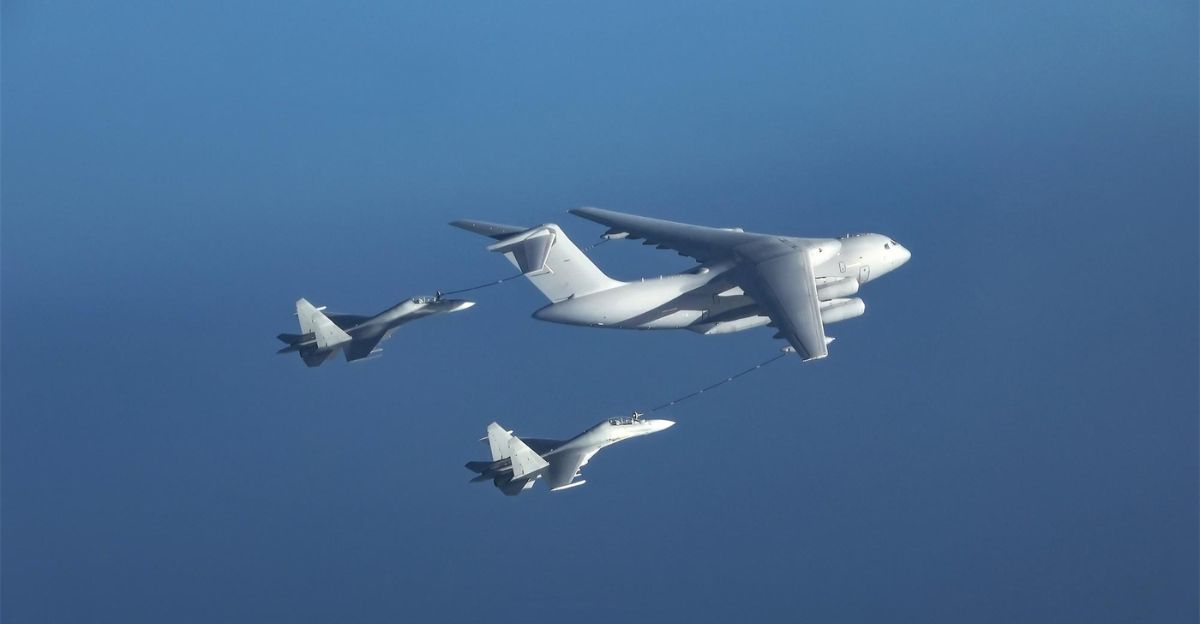
As China continues to refine its aerial refuelling capabilities and expand its fleet, the trajectory of its strategic air force points unmistakably toward greater power projection and global reach. Advancements in command-and-control systems, satellite communications, and real-time mission flexibility will further enhance the PLAAF’s ability to conduct sustained, multidomain operations.
If tanker conversion accelerates, does China edge closer to sustained, global airpower? The world can only watch what China has up its sleeve next.



